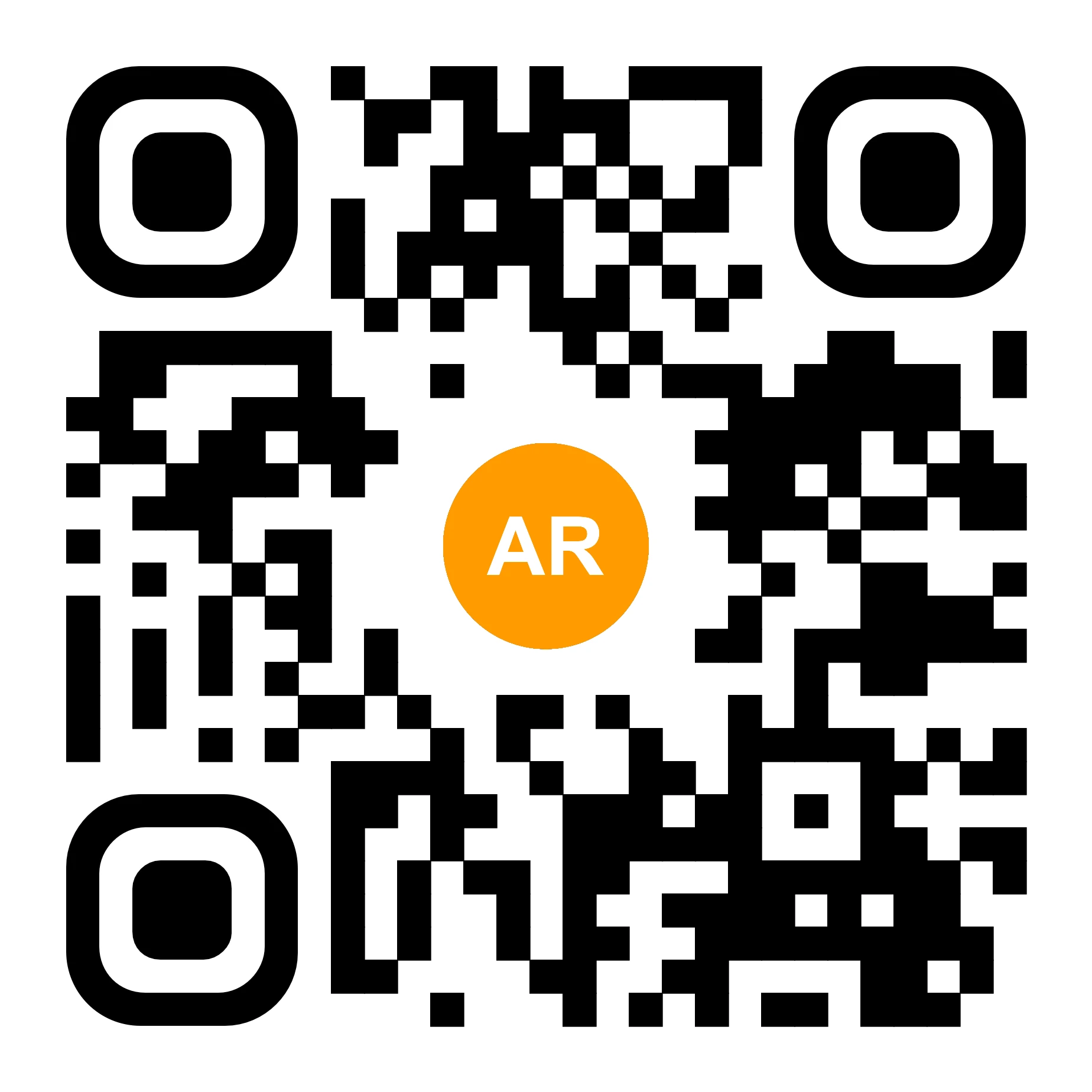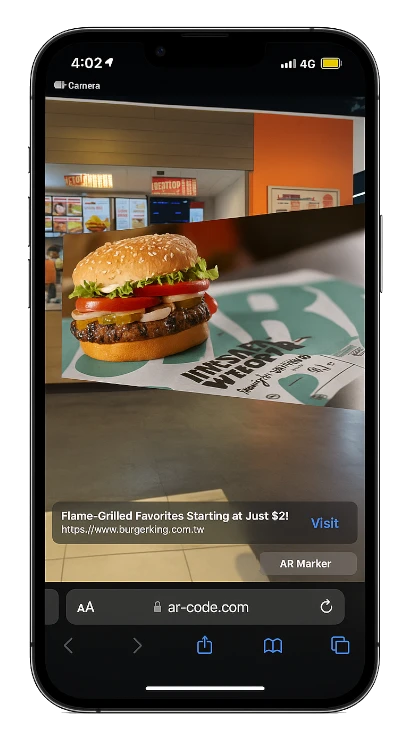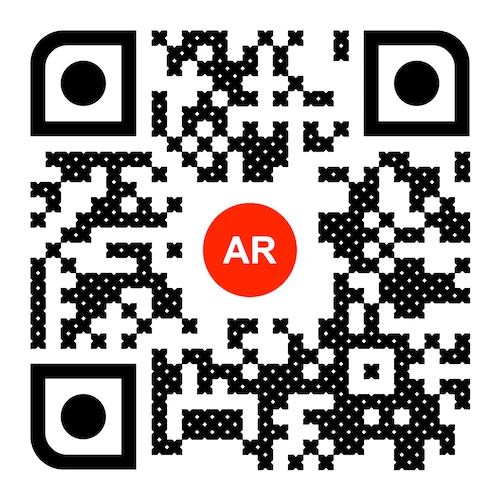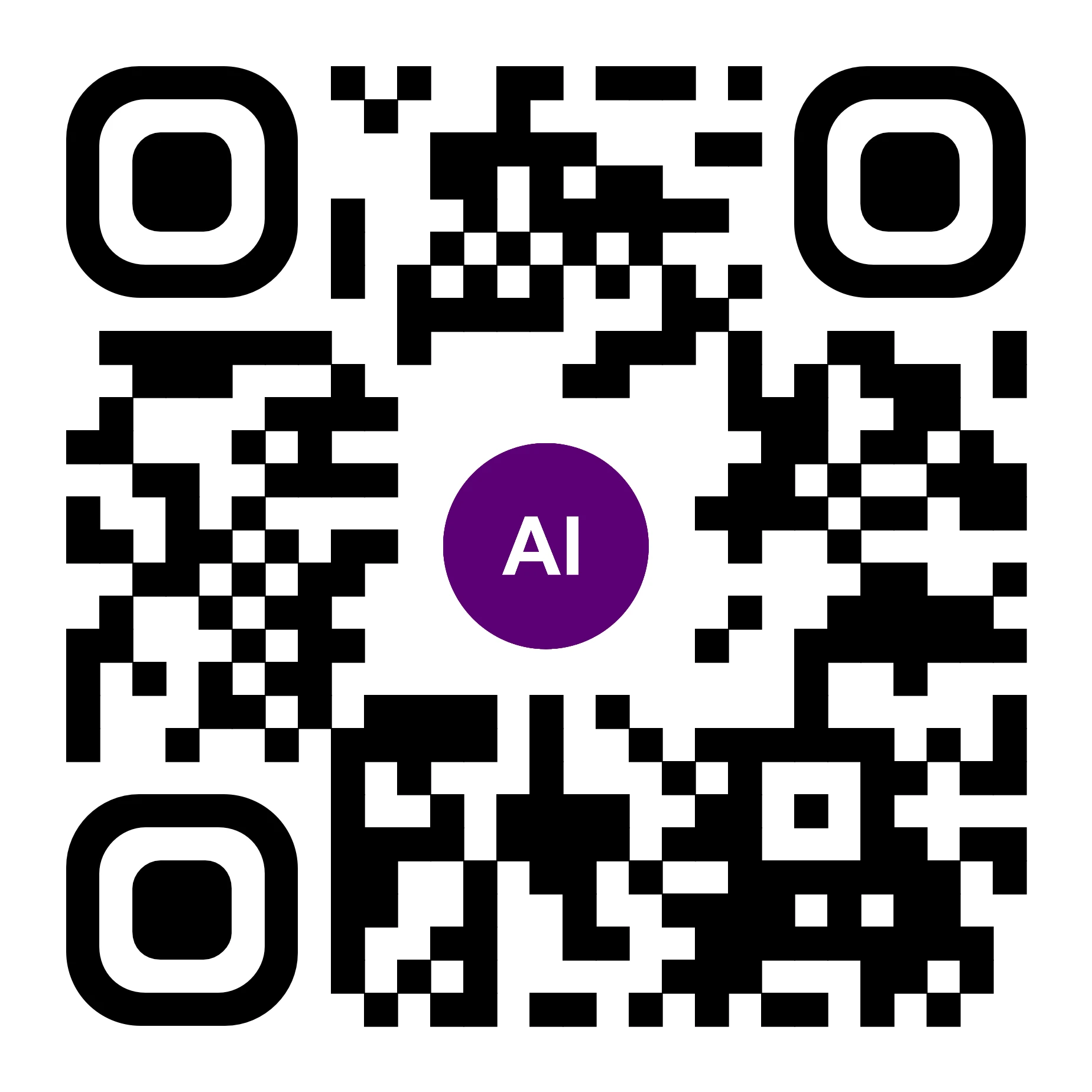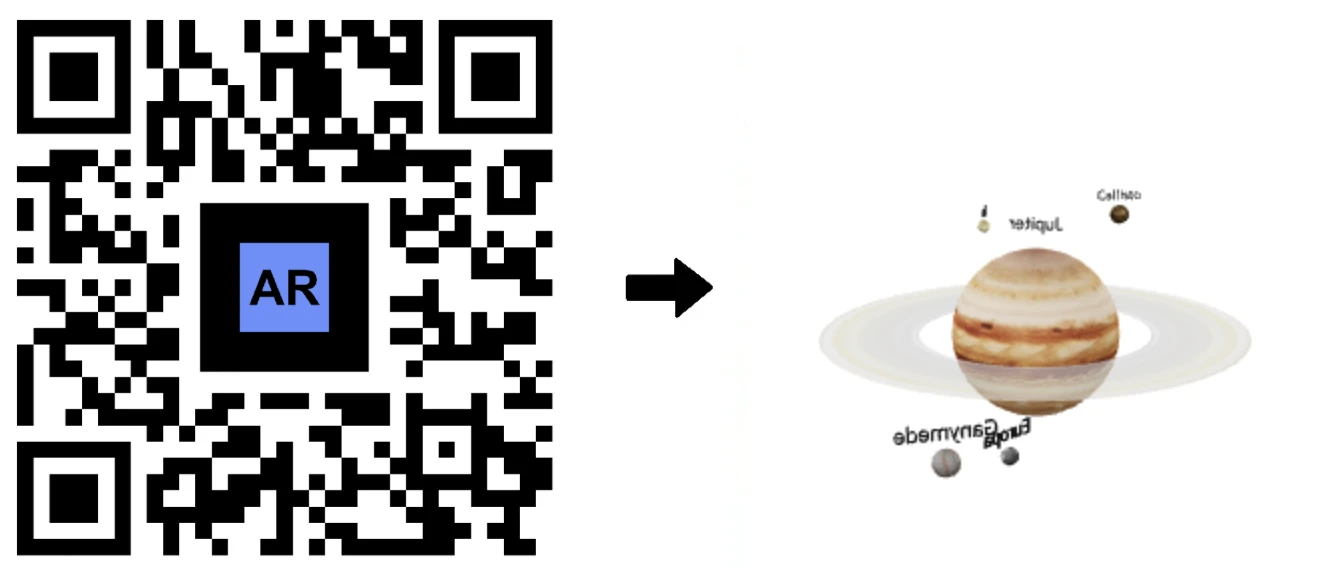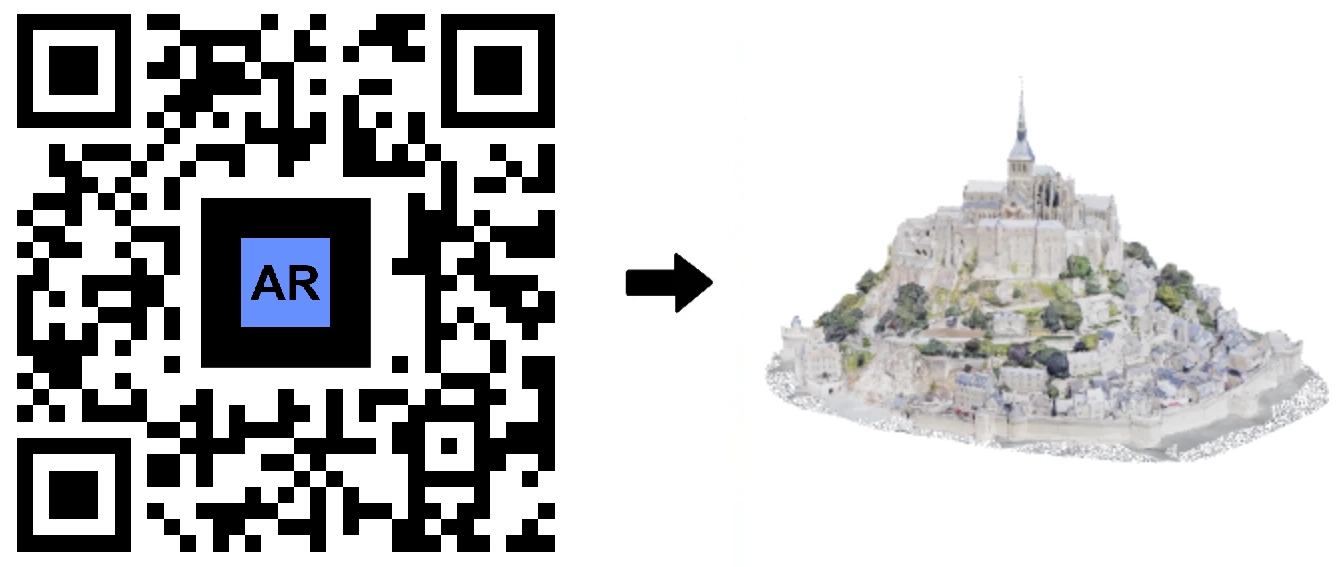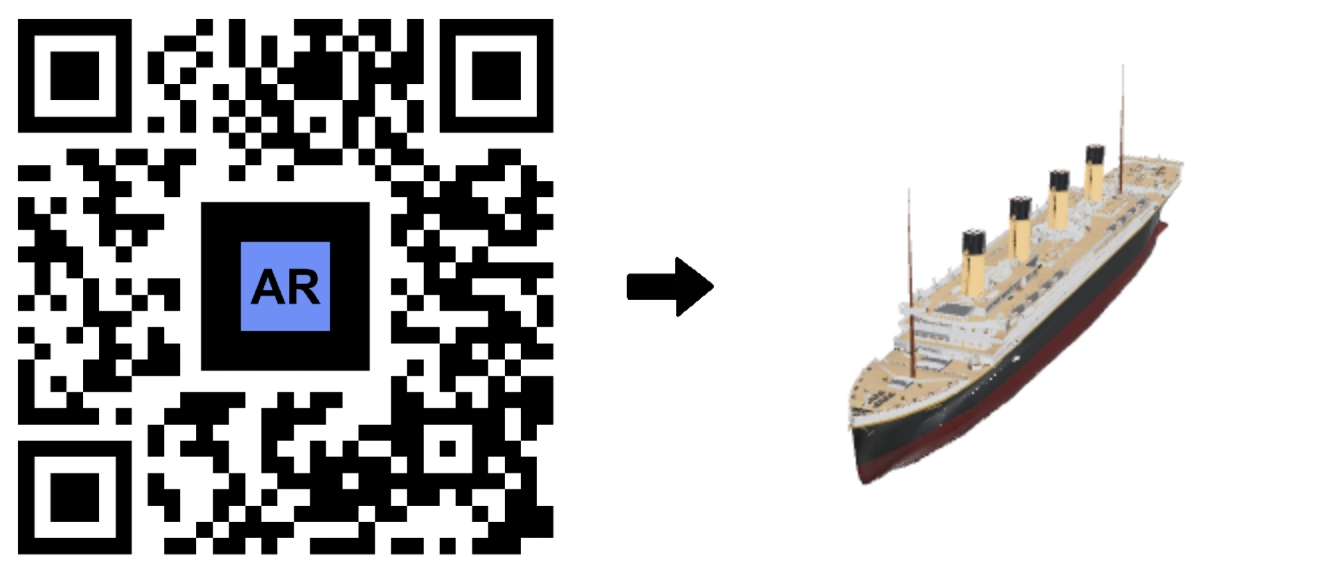How AR QR Codes in Books and Magazines are Transforming the Reading Experience
AR Code Tech | 03/01/2026 |
AR Code technology is transforming how businesses and publishers create interactive digital experiences that drive higher engagement and measurable ROI. In today’s dynamic publishing landscape, AR QR Codes supercharge print media, attract more attention, and elevate the customer experience. Empower your campaigns with this innovative SaaS solution to make your print and digital content more memorable and effective.
Revolutionizing Retail: AR QR Codes in Commercial Magazines and Brochures
Leading retailers and advertisers are using AR QR Codes to unlock new levels of consumer engagement. Enhance traditional brochures, magazines, and catalogs by turning them into interactive tools that showcase your products in 3D. Enable customers to scan your catalog and instantly see a 3D animation of featured items to boost brand recall and increase purchase intent.
Maximize impact with the AR Code Custom Link feature, enabling instant access to AR experiences, product demos, virtual try-ons, or direct connections to e-commerce. Every scan can become a conversion with powerful tracking and analytics built into your print content.
AR QR Codes offer more than innovation—they provide a strategic approach to customer-focused print marketing. Each catalog, brochure, or magazine becomes an interactive AR journey that strengthens your brand presence and delivers measurable results with AR Code SaaS.
Interactive Learning with AR Codes in Books
Educational publishers can create interactive AR learning by embedding AR Codes in textbooks and magazines. Scanning these codes unlocks 3D models, animated diagrams, and immersive visuals—bringing topics like science, engineering, and history to life. Get started with this AR photo tutorial.
Integrating AR Code transforms textbooks into dynamic, interactive lessons that boost knowledge retention and foster collaboration. Find out how AR enables collaborative product design and education for deeper engagement.
Elevating Visual Content with Immersive AR Experiences
AR Codes enable tourism, real estate, and design publishers to deliver interactive 3D visualizations that set them apart. Use AR to turn a real estate brochure into a virtual property tour. See the power of AR in real estate marketing and discover how home furnishings can be visualized in AR.
Tourism outlets provide virtual tours of attractions, and retailers let customers preview furniture in their homes directly from the catalog. These enhancements deliver elevated customer satisfaction and loyalty by offering next-level experiences with your brand.
With AR Code’s advanced SaaS platform, print materials come alive with augmented reality videos, immersive audio, and interactive 3D content. Seamlessly merge print and digital to amplify every campaign's engagement.
Music and educational magazines can stand out by embedding AR Codes that deliver instant access to audio, songs, and multimedia content for truly interactive storytelling.
Keep Event and Museum Exhibit Magazines Up-to-Date
Event organizers and museums are increasing visitor engagement by adding AR QR Codes to guides, catalogs, and programs. Attendees gain instant access to updated information and exclusive digital experiences, keeping your content always relevant.
Upgrade exhibits and visitor experiences using insights from our guide on AR Code technology for museums. Keep audiences engaged and informed with fresh digital content accessible by a scan.
Boost E-commerce and Advertising Opportunities
Accelerate sales growth by integrating AR Codes for augmented reality commerce. Place AR QR Codes in print to move shoppers directly to product pages, improving conversions and optimizing the buyer journey. Drive measurable impact with solutions for interactive AR advertising that target, engage, and convert at scale. Enhance your marketing with AR Code SaaS technology that adapts to your business.
Conclusion
Businesses, publishers, and marketers can achieve higher engagement, better insights, and impactful results by integrating AR Codes into print media. Augmented Reality Codes create interactive, data-driven content that connects with readers and increases retention and response.
With AR Code SaaS, organizations connect print and digital seamlessly, powering immersive marketing campaigns and setting their brand apart. Deliver leading-edge experiences and keep your campaigns ahead of the curve with AR QR Codes. Get started with our AR Code scanning guide.
Frequently asked questions
How are AR Codes enhancing interactive learning in books and magazines?
AR Codes embedded in textbooks and magazines deliver engaging, interactive lessons. Scanning reveals 3D models and immersive content, helping readers visualize complex topics from molecules to architecture. This interactivity enhances comprehension and retention for all learners. Learn more about AR in education.
How are AR Codes being used to integrate multimedia content in printed materials?
AR Codes bring multimedia to print. Music magazines, for example, can instantly connect readers to songs or audio content, offering a richer and more immersive publication experience.
How are AR Codes enhancing e-commerce and advertising opportunities in commercial publications?
AR Codes in commercial media connect print with e-commerce. Readers can preview products and purchase directly from their device after scanning. AR-powered ads command attention and produce measurable results. Strengthen your campaigns with interactive AR advertising built for modern businesses.
AR Code Tech - Latest Blog Posts
AR Splat: A New 3D Scanning-to-Augmented Reality Solution Based on Gaussian Splatting

AR Splat by AR Code empowers businesses to create immersive, high-quality 3D environments from simple videos, streamlining 3D content creation for web-based AR experiences. Upload a walk-around video and AR Splat instantly generates a photorealistic 3D scene, accessible directly through an AR QR Code. Driven by...
AI Code’s Image Generation Redefines Product Visualization Through a QR Code Scan

AR Code is transforming Augmented Reality (AR) and Artificial Intelligence (AI) for businesses by providing AI-generated visualizations that engage customers instantly through a QR code scan. Unlock the potential of AI Code for your business and drive customer interaction with immersive AR experiences. Retailers,...
AR Code Object Capture Now Works on All iPhones and iPads No LiDAR Required
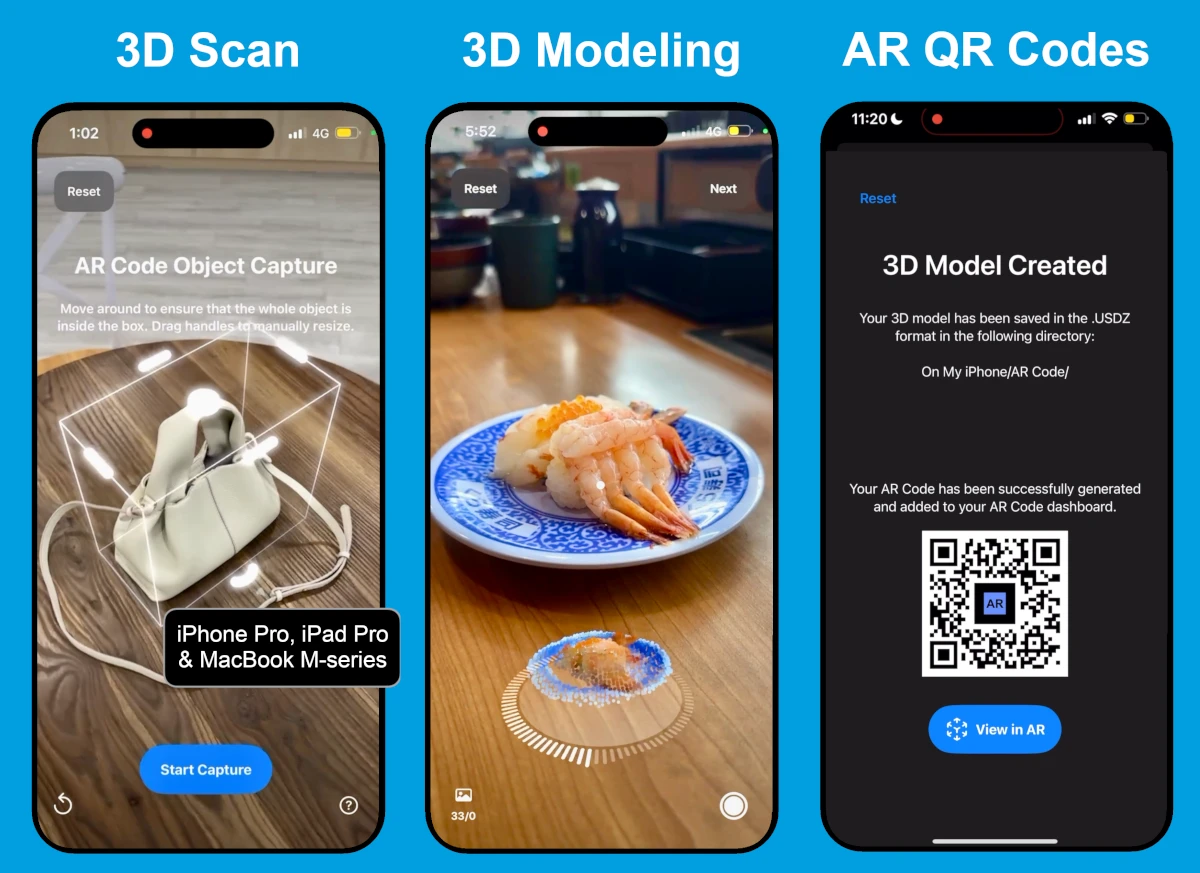
Elevate your business with immersive augmented reality using the AR Code Object Capture app. Instantly capture and create 3D models plus AR QR Codes on any iPhone or iPad, no LiDAR required, streamlining digital workflows and unlocking new customer engagement strategies. Empower your team to deliver interactive AR...
3D Scanning from Video Now Available on the AR Code Web Interface
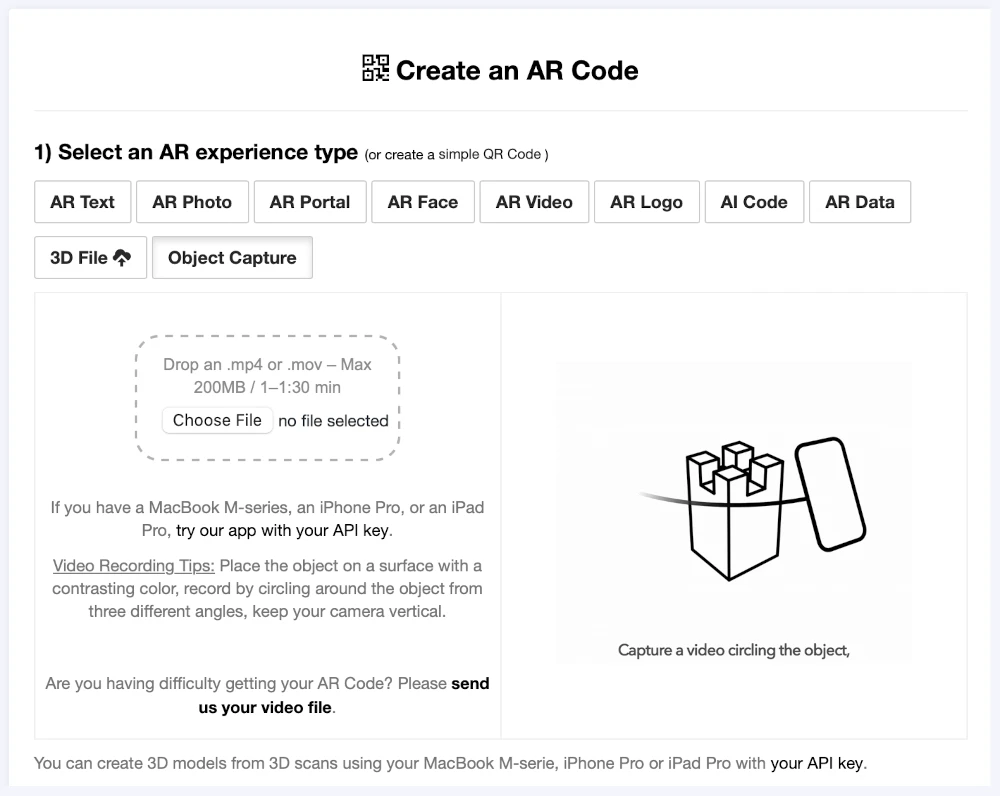
Transform your business with the innovative AR Code Object Capture solution, now available on our web platform. Boost your brand's impact by turning video-based 3D scans into immersive augmented reality content in minutes, all without technical hassles. Forget complicated apps or extra hardware. Upload a...
Guide to 3D Scanning with Our "AR Code Object Capture" Solution

Accelerate your business’s digital transformation with AR Code Object Capture—the leading SaaS platform for 3D scanning and augmented reality experiences that drive growth, engagement, and revenue. Trusted by top organizations, AR Code delivers high-quality 3D model creation for marketing, e-commerce,...
From Video to 3D Modeling: Photogrammetry with AR Code Object Capture on MacBook M-Series
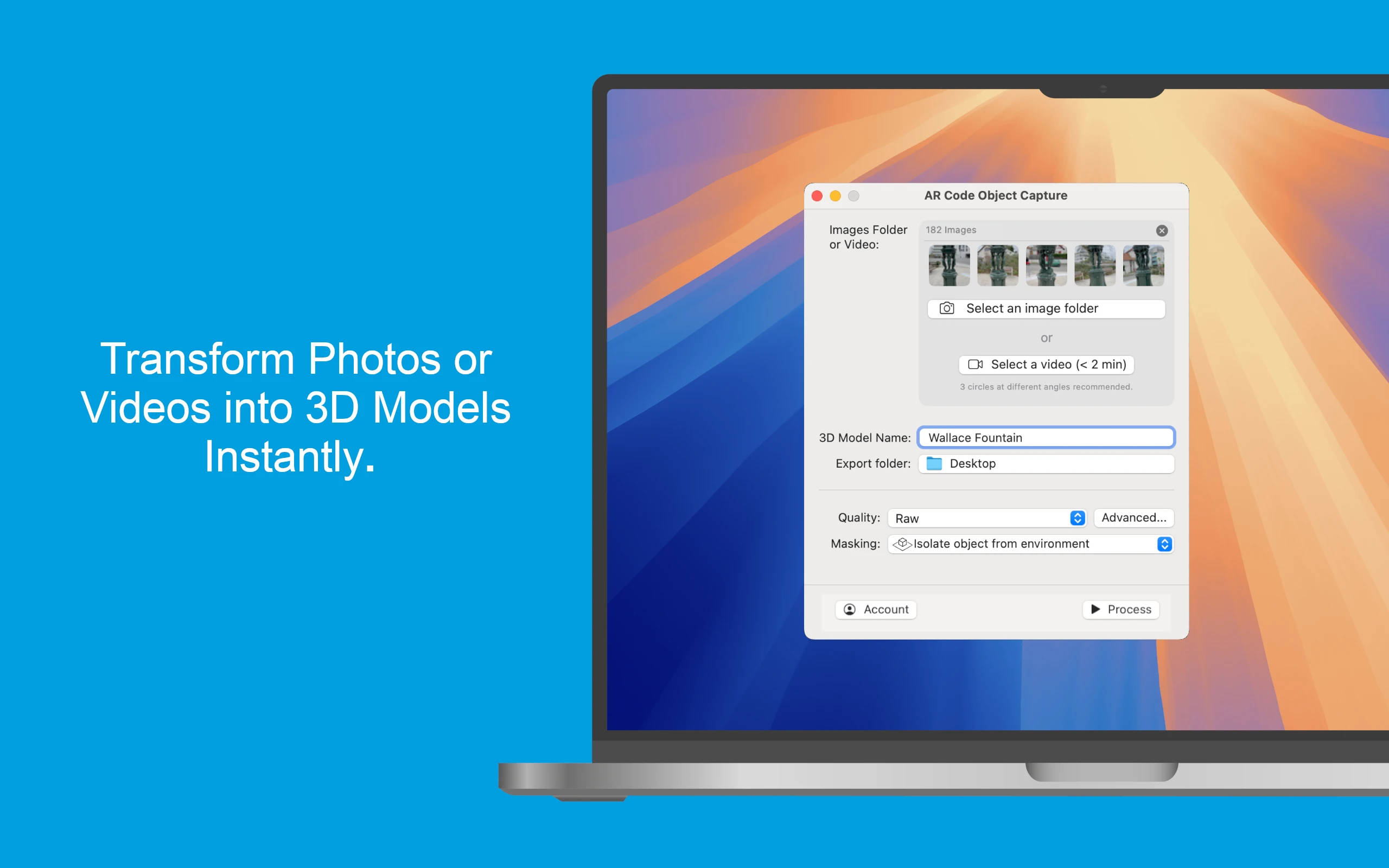
Elevate your business with the cutting-edge AR Code Object Capture app, the premier 3D scanning and augmented reality SaaS platform for enterprises. Purpose-built for MacBook M-series (macOS 15.0+), this app converts real-world products into vivid 3D models and AR QR Codes in just minutes. Seamlessly compatible across...
Personalize Your AR Codes with Innovative Design Options

AR Codes are revolutionizing business engagement by seamlessly connecting physical products, print materials, and digital content into interactive augmented reality experiences. Unlike standard QR codes, AR Codes on the AR Code SaaS platform offer advanced visual customization, transforming plain codes into vibrant,...
AR Code's Low-Power SLAM: Augmented Reality for Everyone, Everywhere

Accelerate your business growth with AR Code, the flexible SaaS platform revolutionizing accessibility and engagement in Augmented Reality for companies worldwide. Deploy dynamic AR experiences across premium and affordable devices, from flagship smartphones to entry-level Androids. AR Code’s advanced low-power SLAM...
Revolutionize Your Online Boutique with 3D Scans Using the AR Code Object Capture App

In today’s fast-paced e-commerce world, delivering immersive and interactive shopping is crucial for businesses to stand out. Online shoppers expect to experience products as vividly as in person. AR Code helps companies surpass these expectations through leading-edge Augmented Reality solutions. Using the intuitive...
AR Face Filter Creation Simplified: Boost Brand Engagement with AR QR Codes

Accelerate your brand reach and energize your marketing strategy with the AR Face Filter, an innovative augmented reality SaaS solution from AR Code. Instantly project your logo or images onto users’ faces using advanced AR and AI technology. Perfect for sports teams, event organizers, entertainment brands, and...
151,046 AR experiences
553,919 Scans per day
129,316 Creators



